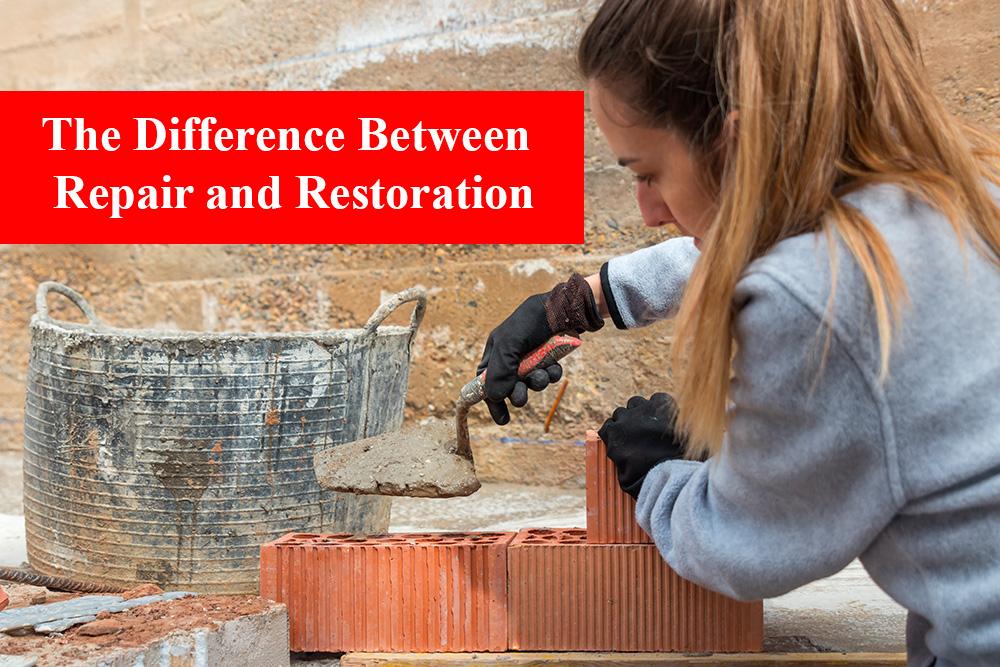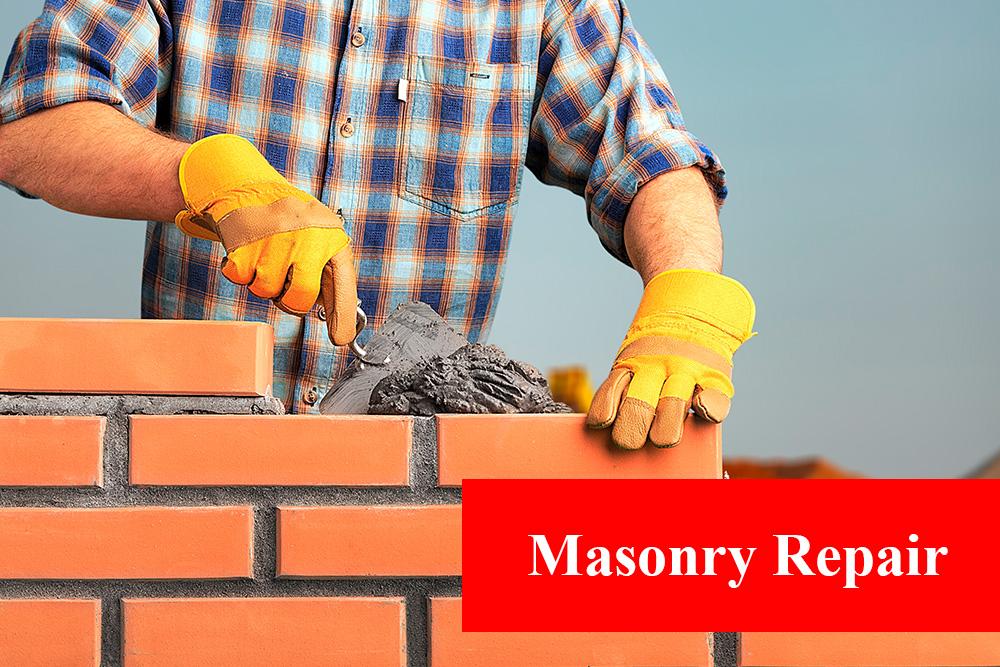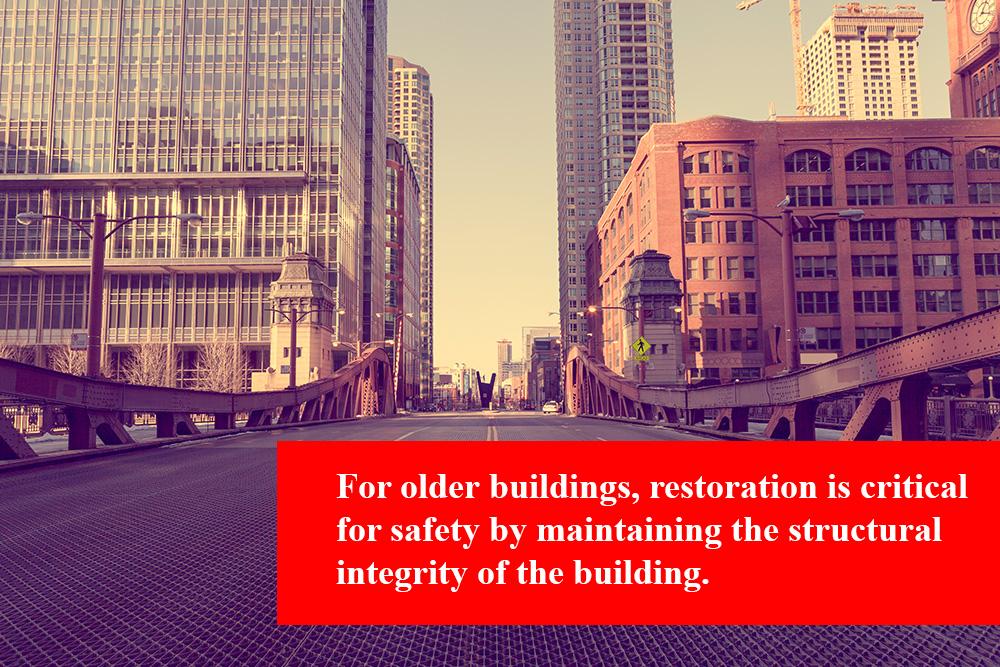Stone, brick, and concrete are some of man’s most durable building materials. Many medieval castles have withstood the tests of time and war, and some famous brick mansions are just as stately today as when they were built. However, irrelevant of how strong these materials are, nothing will last forever without the proper care. The proper upkeep of any type of masonry requires regular maintenance. Understanding the differences between restoration and repair and the methods each entails is essential before undertaking such an important project. While professionals know the difference, many laypeople tend to think that repair and restoration are one and the same.
Almost all commercial buildings have some form of masonry components either in the walls, the foundation, or both. Masonry refers to the construction method that uses mortar to form the joints that hold bricks, stones, or concrete blocks together. While many modern buildings employ different construction materials, many historic buildings are comprised almost entirely of masonry materials or have masonry facades. Commercial buildings may also have chimneys and walkways made up of masonry materials.
Bricks, mortar, and cement weaken if not properly cared for. Degradation happens very slowly, over years or decades, and masonry buildings that don’t undergo repair and restoration when needed can become structurally compromised. As commercial masonry buildings begin to show signs of defects after a time, a trained expert must know what needs to be done and the best way to achieve the desired results to bring your building back to its former glory.
The Difference Between Masonry Repair and Restoration

When discussing the differences between brick and masonry stone repair and restoration, it is essential to note that while much of the same work is often involved in both processes, there are some significant differences. The biggest difference between repair and restoration is repair involves just fixing physical defects. In contrast, restoration involves fixing defects and replacing all of the mortar and any badly damaged masonry units. A full restoration is a much larger and more expensive job, and its goal is to restore the building to both its original appearance and structural integrity. Repairs are much more limited in scope, only addressing structural issues, and typically have no effect on restoring the original appearance of the building.
Because commercial buildings will experience regular damage, at some point, every building owner will have to perform masonry repairs on their buildings. However, unless they have inherited a neglected structure, most people will not own a building long enough for restoration to become a concern. On the other hand, restoration is required only when the building’s masonry needs to be replaced entirely, and it can take decades for a building to reach this stage of neglect, which is the key. Maintaining a commercial masonry building by performing regular repairs can extend the life of the building and significantly extend the time before restoration is required.
Masonry Repair

Masonry can be damaged through everyday exposure to the elements, daily wear and tear, or accidental damage. Because the masonry units, as well as the mortar, is prone to cracking and chipping from repeated freeze and thaw cycles, repairs become necessary over time. Masonry brick and masonry stone repair involve fixing any physical defects in the masonry units, meaning the individual bricks, stones or concrete blocks, or mortar.
Signs that masonry requires repair include cracked or chipped bricks or stones, crumbling mortar, and/or discoloration, known as efflorescence, which indicates the masonry is retaining moisture. These repairs can range from relatively minor issues, such as cracking in the masonry units, to more serious issues like bulging or spalling bricks. Because these issues can all pose a danger to the overall structural integrity of the building, masonry repair should be performed by experienced commercial masonry contractors at the first sign of damage.
Repairs may be simple or complex, and the time involved will be commensurate with the amount of damage and how much detail is involved. This repair process involves replacing severely damaged bricks or stones with new ones and repairing cracks in the units with some type of filling material that may include caulking, sand, or concrete filling, depending on the severity of the crack. Caulking is most commonly a solution for cracks in walls and driveways where sand-patching and concrete filling is usually used in walls and foundation.
To make an invisible repair, the new material must be matched to the surrounding material, so there is no noticeable change in appearance. However, even minor masonry repair requires expertise to perform and properly maintain the appearance of the building, so it should only be done by professional commercial masonry contractors. Most often, repair takes significantly less time and effort than restoration. The cost for repairs is typically much lower than restoration, making repair the more affordable option if cost is a major concern.
Masonry Restoration
Masonry restoration is more involved than repairs, takes longer, and is more costly—however, restoration results in a beautiful building. While repairing damaged masonry only involves a portion of a building, masonry restoration typically includes the entire building. The first step in masonry restoration is removing worn-out materials, and the old material is then replaced with new materials that match the originals. For example, if a building was constructed with red bricks, then red bricks with exactly the same appearance as the original bricks will be used.
The restoration process often involves using specific techniques and finding era-specific materials for historic buildings or engineering materials that match the existing structure. New mortar is added in a process called repointing, and workers then refinish the mortar, and the new surface is then sealed to promote longevity. This process requires technical expertise beyond the skill set of the typical building owner or property maintenance company.

For older buildings, restoration is critical for safety by maintaining the structural integrity of the building. When professionally restored, your building will look like it did when it was first constructed. This is an essential consideration for buildings that have historical registration or status. Even if a building does not have historical significance, the restoration process will increase its value by improving its appearance.
Leaving damage unaddressed can not only lead to more extensive damage, but it will also end up costing significantly more in the long run. If you have a commercial masonry building that needs attention or you want more information on brick or masonry stone repair or restoration, Epic Masonry Restoration has years of experience maintaining all types of commercial masonry in Minneapolis and St. Paul. Their expert technicians are trained to maximize the value of your building by ensuring all the proper methods and materials are used to enhance its appearance and structural integrity. Contact Epic at 612-662-7420 for a free consultation or visit them online at EpicMasonryRestoration.com or EpicMinnesota.com.

